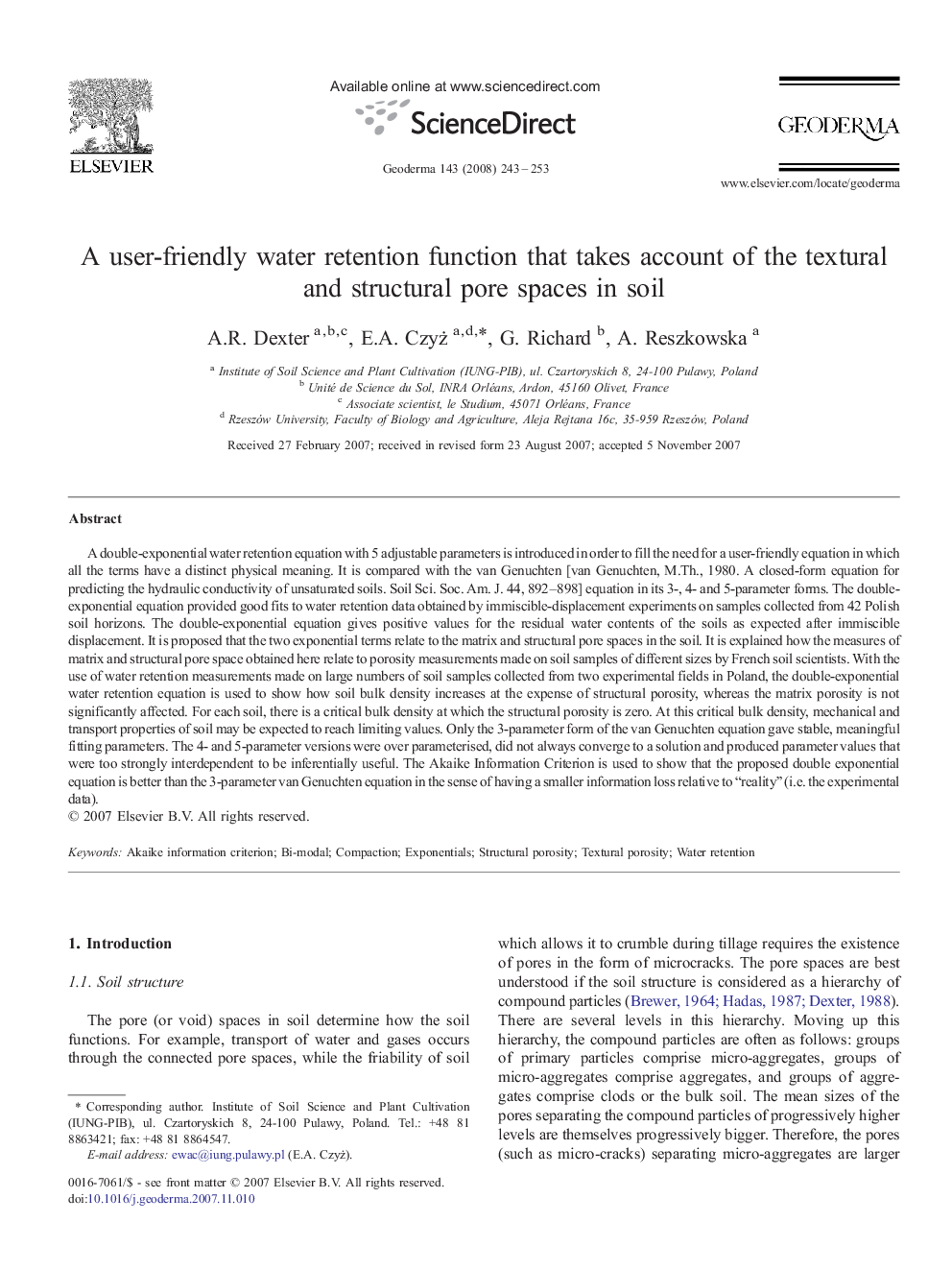| Article ID | Journal | Published Year | Pages | File Type |
|---|---|---|---|---|
| 4575259 | Geoderma | 2008 | 11 Pages |
A double-exponential water retention equation with 5 adjustable parameters is introduced in order to fill the need for a user-friendly equation in which all the terms have a distinct physical meaning. It is compared with the van Genuchten [van Genuchten, M.Th., 1980. A closed-form equation for predicting the hydraulic conductivity of unsaturated soils. Soil Sci. Soc. Am. J. 44, 892–898] equation in its 3-, 4- and 5-parameter forms. The double-exponential equation provided good fits to water retention data obtained by immiscible-displacement experiments on samples collected from 42 Polish soil horizons. The double-exponential equation gives positive values for the residual water contents of the soils as expected after immiscible displacement. It is proposed that the two exponential terms relate to the matrix and structural pore spaces in the soil. It is explained how the measures of matrix and structural pore space obtained here relate to porosity measurements made on soil samples of different sizes by French soil scientists. With the use of water retention measurements made on large numbers of soil samples collected from two experimental fields in Poland, the double-exponential water retention equation is used to show how soil bulk density increases at the expense of structural porosity, whereas the matrix porosity is not significantly affected. For each soil, there is a critical bulk density at which the structural porosity is zero. At this critical bulk density, mechanical and transport properties of soil may be expected to reach limiting values. Only the 3-parameter form of the van Genuchten equation gave stable, meaningful fitting parameters. The 4- and 5-parameter versions were over parameterised, did not always converge to a solution and produced parameter values that were too strongly interdependent to be inferentially useful. The Akaike Information Criterion is used to show that the proposed double exponential equation is better than the 3-parameter van Genuchten equation in the sense of having a smaller information loss relative to “reality” (i.e. the experimental data).
